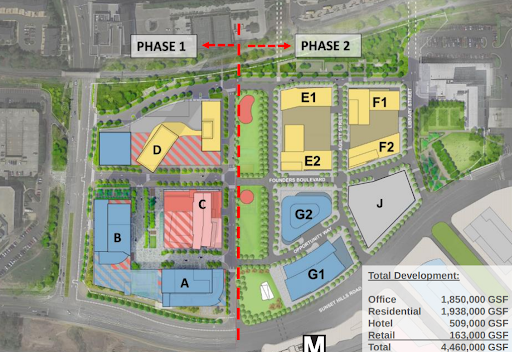FCPS budget crisis: What we don’t want to budge on
Fairfax County Public schools will be facing a deficit of over 100 million dollars come the 2016-17 school year. This is not exactly a surprise. The FCPS Board of Supervisors has seen the shortfall coming for years.
Because of the steadily increasing number of FCPS students, especially students in the ESOL (English for speakers of other languages) program, the cost to operate the school system has continued to increase. FCPS has to hire more teachers, build and expand upon current facilities, and pay for the increased level of resources that some of these new students require. The amount of funding available to schools has not matched their growing costs.
Virginia is the 41st state out of 50 for the amount of spending per student, meaning that it is one of the states that spends the least amount of money per student. According to FCPS Superintendent Karen Garza, this is “something we need to work on.” About 70 percent of the county’s funding comes from real estate and personal property taxes—only about twenty percent comes from the state. Other counties get up to about 45 percent of their funding from the state. This is caused by high Fairfax County property values but these high property values are caused, in part, by Fairfax County’s high ranking school systems. If FCPS is forced to make cuts to vital areas of the budget, then the quality of an FCPS education will suffer, causing property values to go down. This will give even less funding to schools, causing a vicious circle that takes a toll on those in the school system.
Members of the FCPS community have been questioning many of the county’s recent budget decisions. The decision to delay high school start times cost almost 5 million dollars. In addition, FCPS board members recently granted themselves a salary increase. When asked to justify these choices, Garza says it is all relative.
“The budget is a value proposition,” Garza said. “So you kind of have to weigh…what does the board and community and the elected officials most value and how you weigh that in terms of the cost impact. So you kind of have to think about, you know, were those the right choices? I believe they were. Do we need to make a difference and change teacher salaries? Yes, but it’s going to take a lot more money than 4.6 [million] to solve that problem.”
Students and parents continue to show skepticism for these budget cuts. A student reporter commented on the fact that these little things add up.
“Five million dollars here, 100,000 dollars there, eventually you get to 100 million,” he said.
Other members of the community agree with Garza and their opinions are not unfounded. A one percent salary increase for employees would cost 19 million dollars and a step increase for teachers amounts to 41 million.
The Fairfax County School Board is working to find places to cut that have the smallest impact on students. One area that has been heavily speculated upon is cutting kindergarten from a full day to a half day, which would save FCPS a whopping 39 million dollars. At first glance, many people think that cutting costs here should be a no brainer, but it’s more complicated than that. Cutting kindergarten to a half day would put stress on families to find child care, especially those from low income backgrounds. Additionally, the benefits of early childhood education are numerous and have been proven in many studies. Therefore, limiting children from receiving the maximum amount of education possible would have a harmful impact upon them.
All of the areas that FCPS can choose to cut, such as making Kindergarten a half day, have drawbacks. Many of the ‘extra’ areas have already faced budget cuts. Now, larger core areas have to face eliminations.













